
This article was originally published on October 4, 2022 on The Restless Viking website.
Fort Wilkins, already one hundred years old in1939, had been crumbling at the tip of the Keweenaw Peninsula. This fort was brought back to life with Donald W. Dow leading the team. The captivating story of Donald W. Dow and the restoration of Fort Wilkins gave me a better insight into understanding the word, “dedication.”
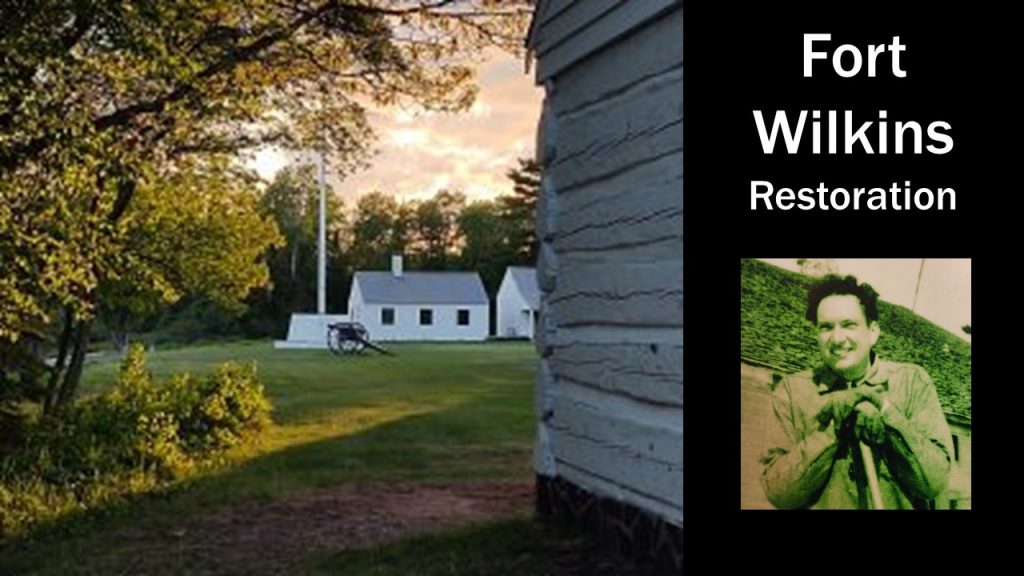
Almost a century ago this man, Donald W. Dow Sr.,
dedicated a full decade of his family’s lives to restoring Fort Wilkins. (1939-1948)
Donald’s smile spoke to me when I saw him featured in one of the restored buildings at Fort Wilkins.
I needed to know more!
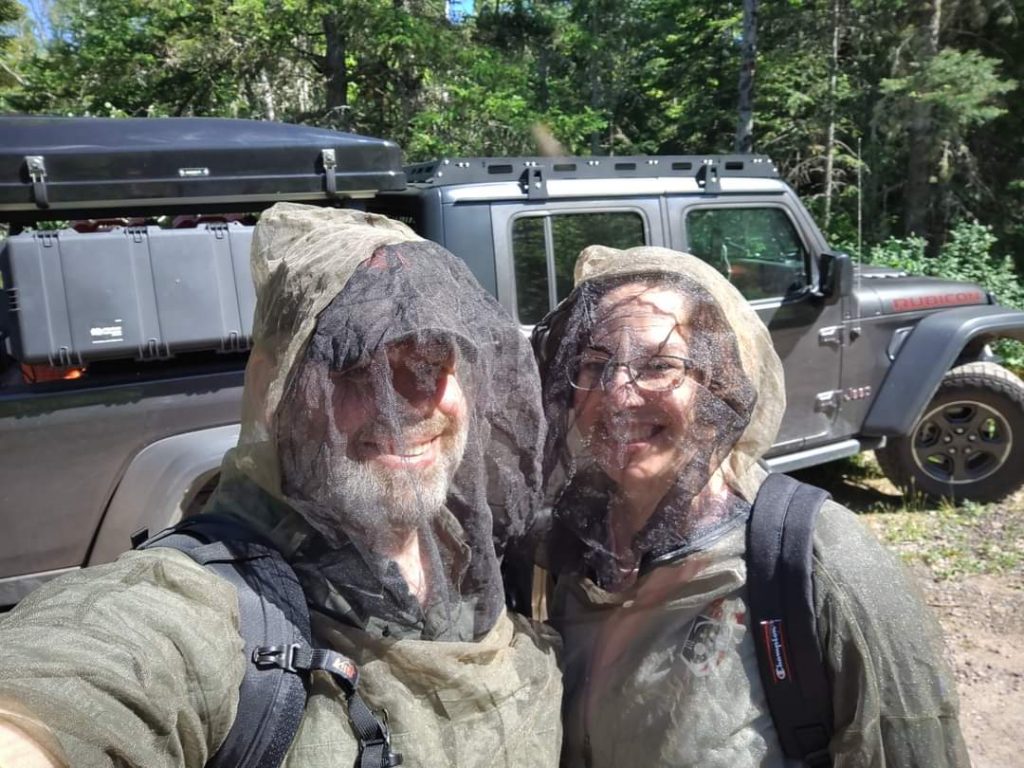
I highly recommend wearing ‘bug shirts’ when hiking in Michigan’s upper peninsula. They make up in function for what they lack in fashion!
Join Chuck and I as we stroll through Fort Wilkins soaking up the history while being mindful of the dedicated work it had taken Donald W. Dow and his crew to preserve these relics.
Why Was Fort Wilkins Built?
Following the Treaty of Washington in 1836, where the natives signed over their rights to the upper peninsula and surrounding areas, Doughlass Houghton, a geologist, was sent on an expedition. His discovery of copper was the catalyst for the Copper Rush.
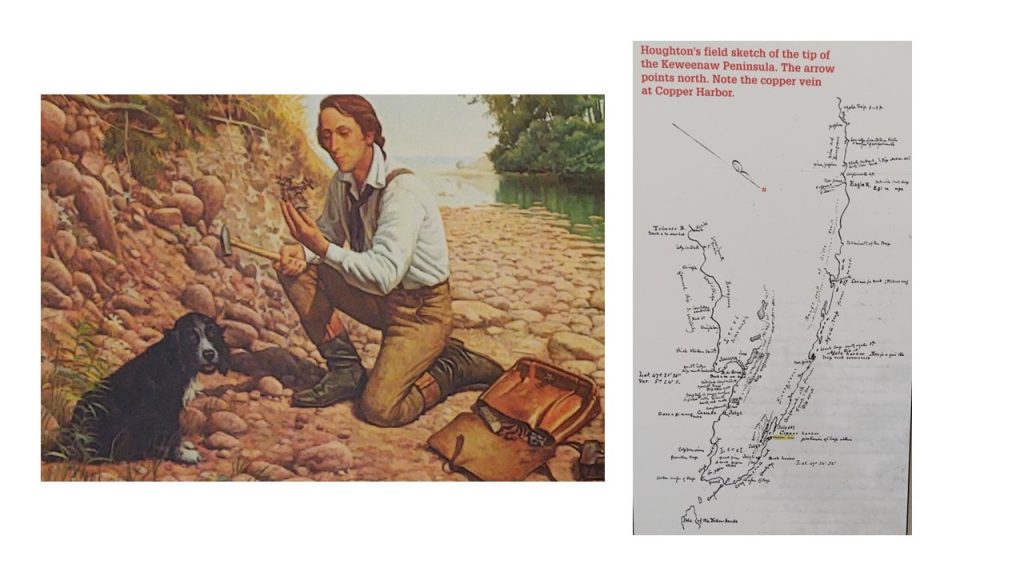
Douglass Houghton, Michigan’s first state geologist,
discovered copper in the Keweenaw peninsula on a scouting expedition in 1841. He drew the Keweenaw map (on the right) with incredible detail! Photo Credit: Fort Wilkins State Park
I asked myself, “How did Douglass Houghton survive without a bug shirt?” In my opinion, previous generations carried a depth of determination that is rarely seen today.
The Copper Rush
“Miners are flocking to Lake Superior copper mines in vast numbers.” The Democratic Free Press reported on June 5, 1845 “The shores of Keweenaw Point were whitened with tents.”
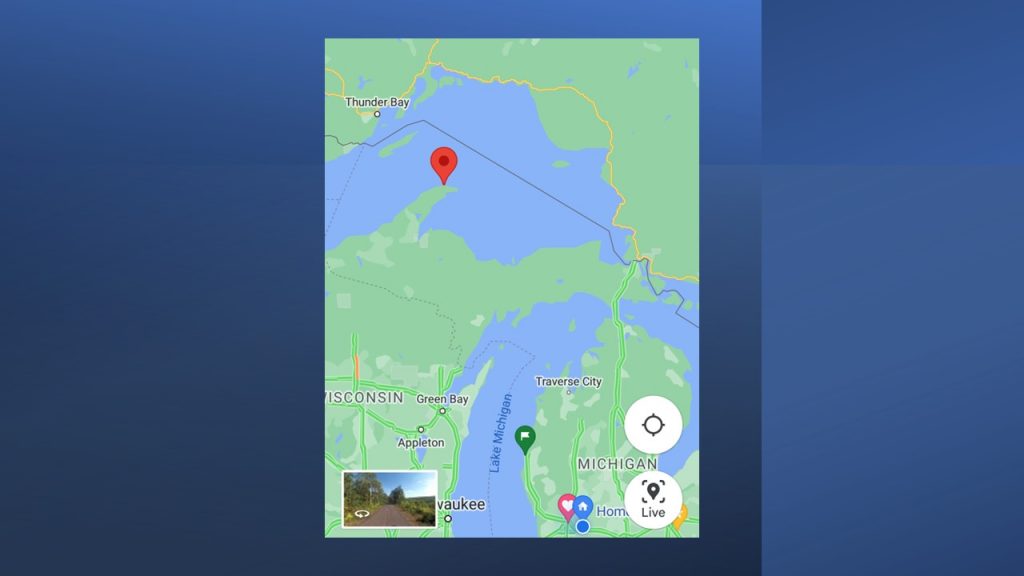
Without roads or trains, ships were the only form of transportation to the tip of the Keweenaw peninsula.
Fort Wilkins had been built in 1844 as a law enforcement agency to help keep peace for the copper mining area. However, this didn’t appear to be necessary. When the Mexican-American war started two years later, troops were sent south abandoning Fort Wilkins. The fort was reopened for a short time in 1867 following the Civil War, but closed again in 1870.
By 1923 Fort Wilkins was named a state park, but had fallen into disrepair. The upkeep started at a slow pace, then in the 1930’s ‘The Depression’ dominated our country.
Donald W. Dow, a charismatic teacher, was enticed by the opportunity to breathe life back into the nearly one hundred year old fort. The Works Progress Administration (WPA), a federal program to rebuild the economy by assigning work projects, provide laborers who lived nearby in mining villages: Ahmeek and Mohawk.
Donald W. Dow, Sr.
Donald W. Dow, Sr. was hired by the Michigan Department of Conservation to manage the restoration. Donald, his wife, Violette, and their two children, Donald Jr. and Violette, lived at the fort for nine years during the project. This was longer than any soldier had ever lived at the fort.
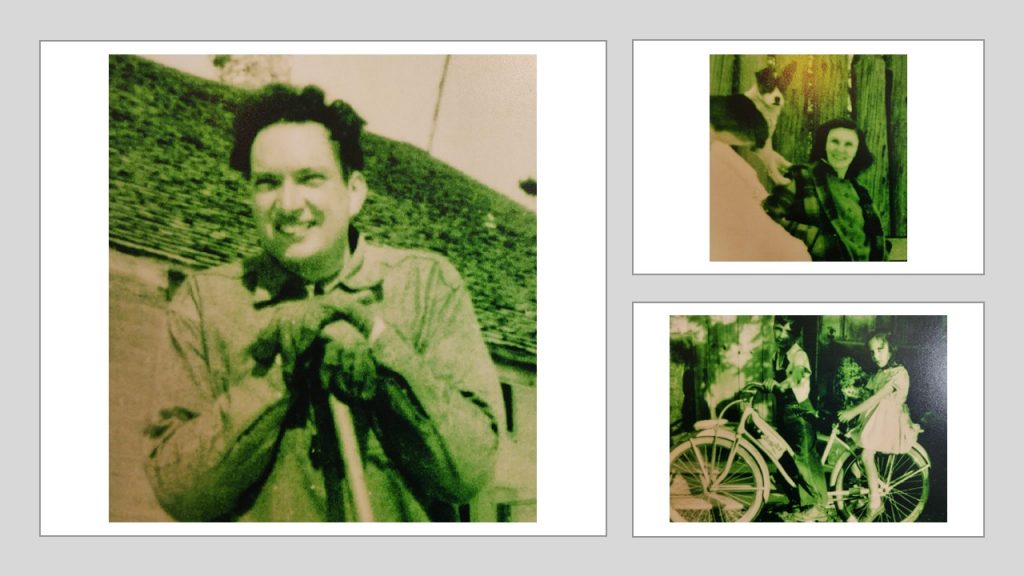
Donald W. Dow and his family resided at the fort as workers restored the buildings.
Donald W. Dow had been the Park Superintendent from1939-1948. Photo Credit: Fort Wilkins State Park
Donald’s energy was evident in this captivating photograph. Marveling at his decade of dedication, I wanted to learn about Mr. Dow and read every sign around the room inside the reconstructed building.
Violette E. Dow, his wife, had been interviewed in 1961. “We had watched the buildings being restored to their original state as near as possible. . . The workmen who restored the Fort became our children’s pals.” ”

Their children, Don Jr. and Violette Dow, spent their formative years living at Fort Wilkins as their father oversaw the renovations and navigated the book work. Photo Credit: Fort Wilkins State Park
“These men were hard workers.” stated Donald W. Dow Sr. “A lot of them were crippled with arthritis from working in the mines, but they were skilled – skilled with an ax.”
This squad worked in all seasons from 1939 – 1948. Dow recalled, “By the time the fellows got down here (from the villages of Ahmeek and Mohawk), riding in these trucks with just a canvas top . . . they were frozen. It took them an hour or so to warm up so they could start working.”
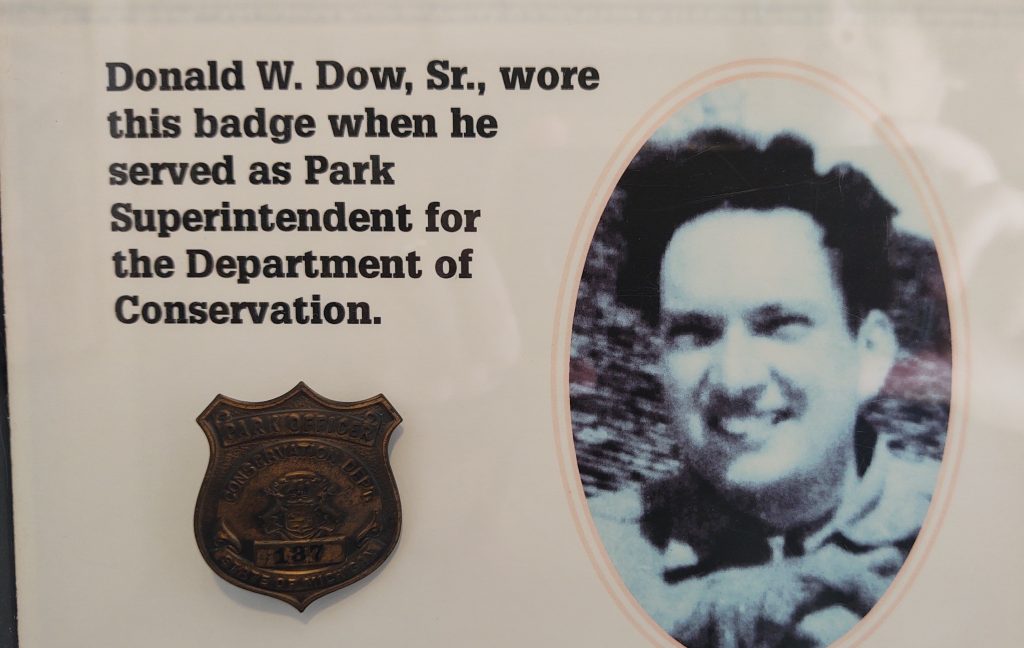
I was captivated by Donald’s smile and leadership as well as his whole family’s devotion to this immense project. Photo Credit: Fort Wilkins State Park
The Works Progress Administration (WPA)
With a 20% unemployment rate in 1935, President Roosevelt started, “The Works Progress Administration” (WPA) which was designed to bring dignity back to our country and heal the economy by putting people back to work following The Depression.
The WPA crews cut timber, peeled bark and hewed logs by hand – often using the same methods that soldiers had used almost one hundred years earlier.
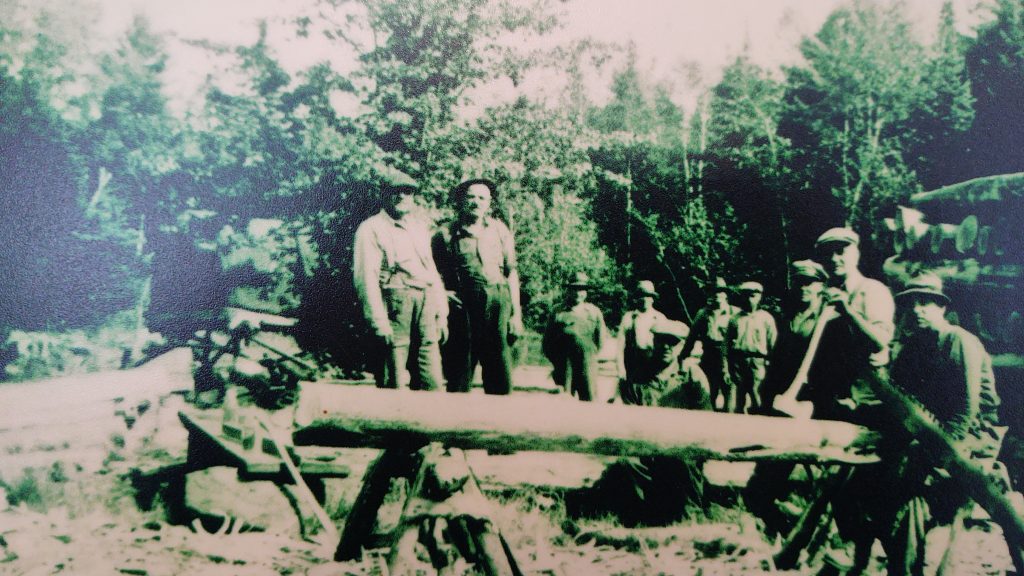
Laid off miners were hired to rebuild Fort Wilkins with historical accuracy. Photo Credit: Fort Wilkins State Park
Then and Now
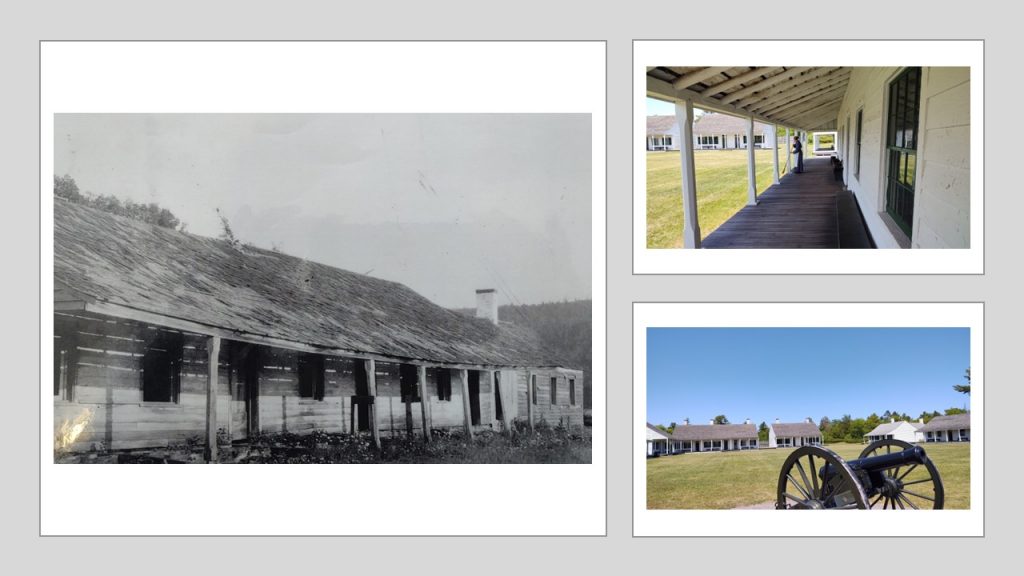
On the left were the East Barracks Mess Hall. This photo was taken in1923. Photo Credit: Fort Wilkins State Park. Today twelve of the nineteen original buildings are restored.
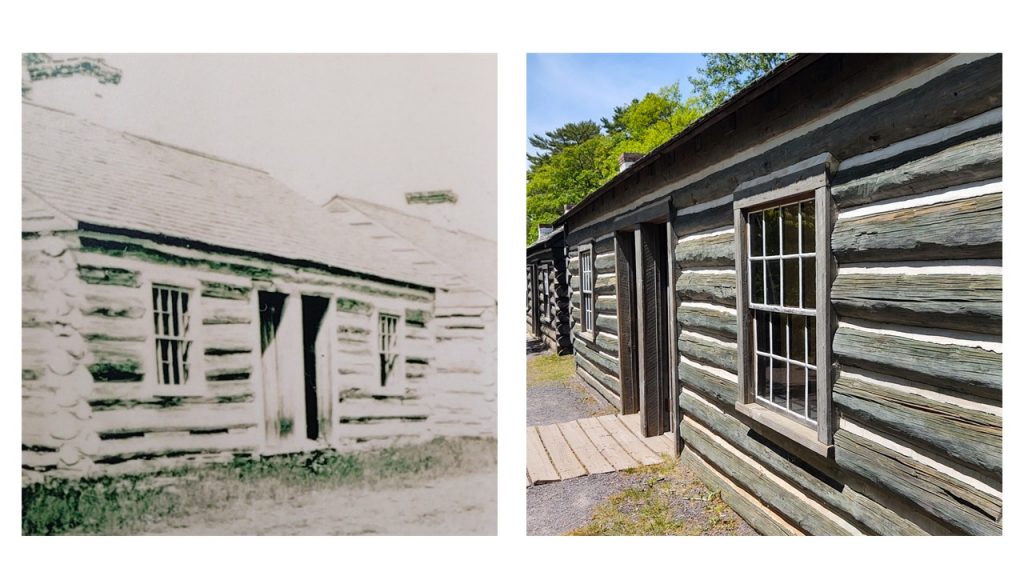
Victor Oja along with his crew carefully dismantled and rebuilt the cabins,
re-using original materials whenever possible. Photo Credit: Fort Wilkins State Park
Carpenter and blacksmith shops were set up on site to duplicate original fixtures. Donald W. Dow had said, “Our blacksmith was such a skilled person. He could replace the shutter hardware and duplicate them exactly the way they were. . . He had been a blacksmith for the mines.”
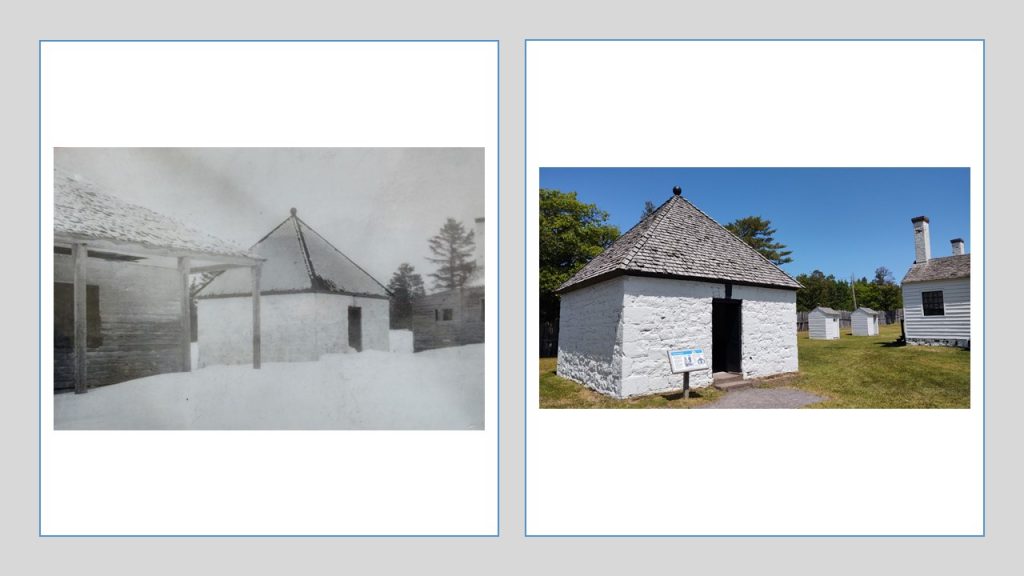
The Powder Magazine in 1900 housed gun powder and ammunition.(left) Photo Credit: Fort Wilkins State Park. Later it was used to keep oil for a nearby range light. (current photo- right)
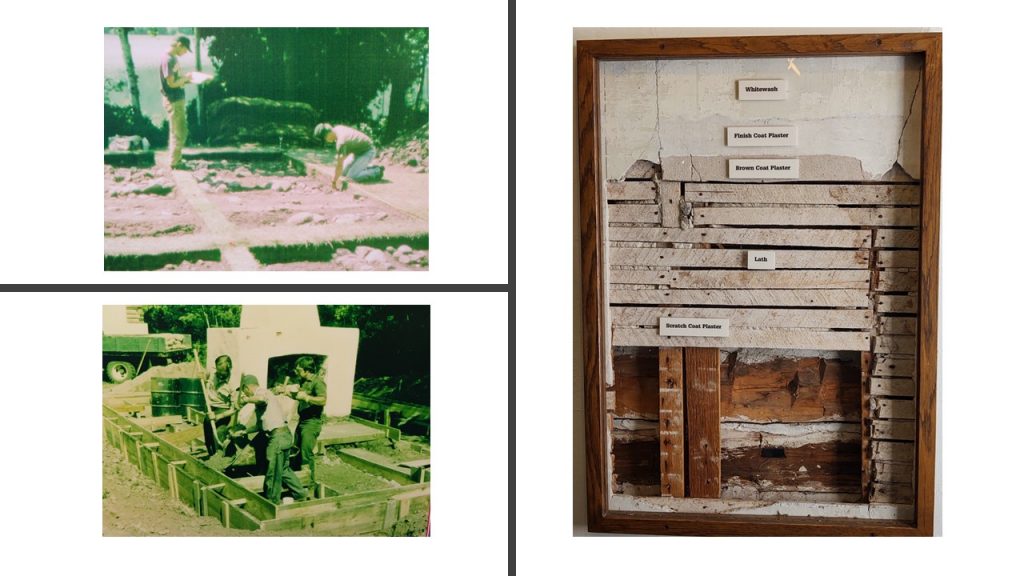
Architect G.D. Jones, the state coordinator for the WPA, worked closely with the Department of Conservation to ensure historical accuracy in the restoration. Photo Credits: Fort Wilkins State Park
The Mystery Of “Frank” The Prisoner
The carved name, “Frank D. Pratt” was discovered inside a cell door during renovations. Donald W. Dow and the WPA workers were curious and conducted some research. “Frank” had been a 22 year old book keeper from Hartford, CT. He’d joined the army during the Civil War. After being wounded in Petersburg, Virginia, he had arrived at Fort Wilkins by the steamship, Ironsides.
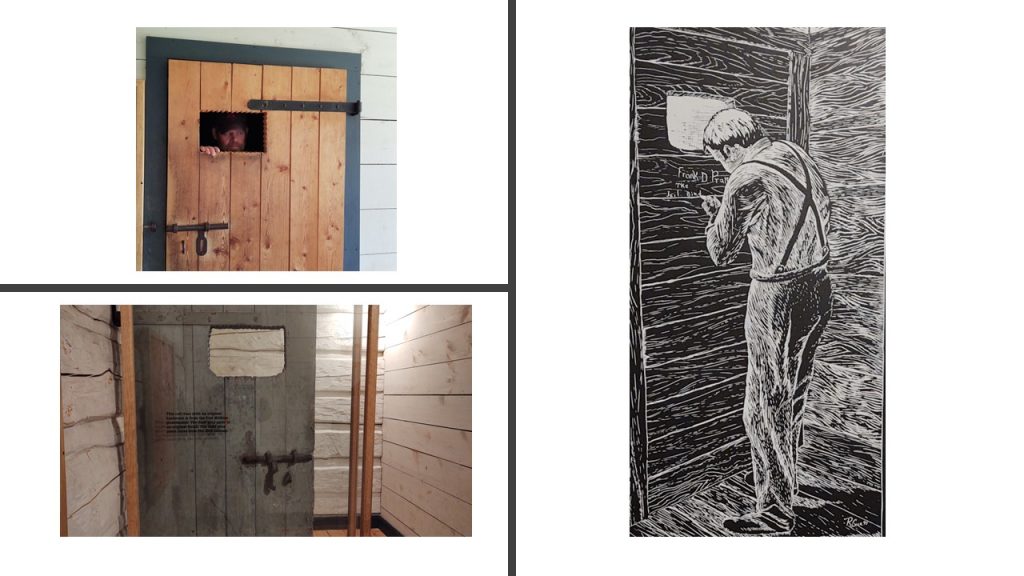
Frank D. Pratt was sentenced to 45 days in the guard house between November 15, 1868 – December 30, 1868. Photo Credit: Fort Wilkins State Park
According the Captain Kenelm Robbins’ log of the steamship Ironsides, “Private Frank D. Pratt did become so intoxicated as to be unfit to perform the duties of a Sentinel.” A ‘sentinel’ offers stability and guidance to others.
The mystery remains as to how Frank had obtained a sharp object to carve his name.
Fort Wilkins Today
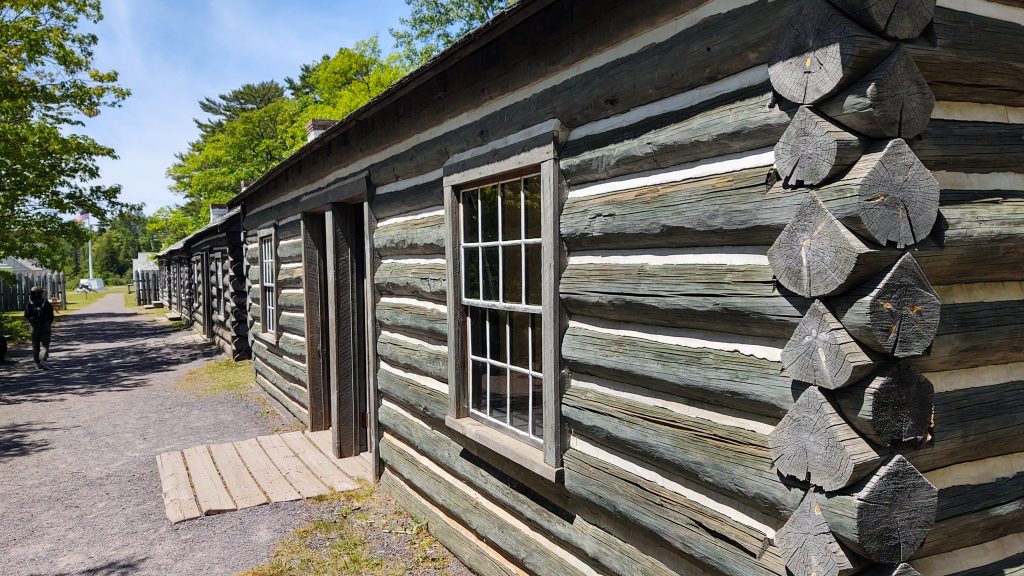
Globally, our country is quite young, so holding our history close is vital to understanding our journey as a nation. Donald W. Dow, his family and the WPA workers hold my highest regard. Their dedication to preserving history has kept this 179 year old fort alive. We are afforded the opportunity to absorb knowledge of this area through all our senses.
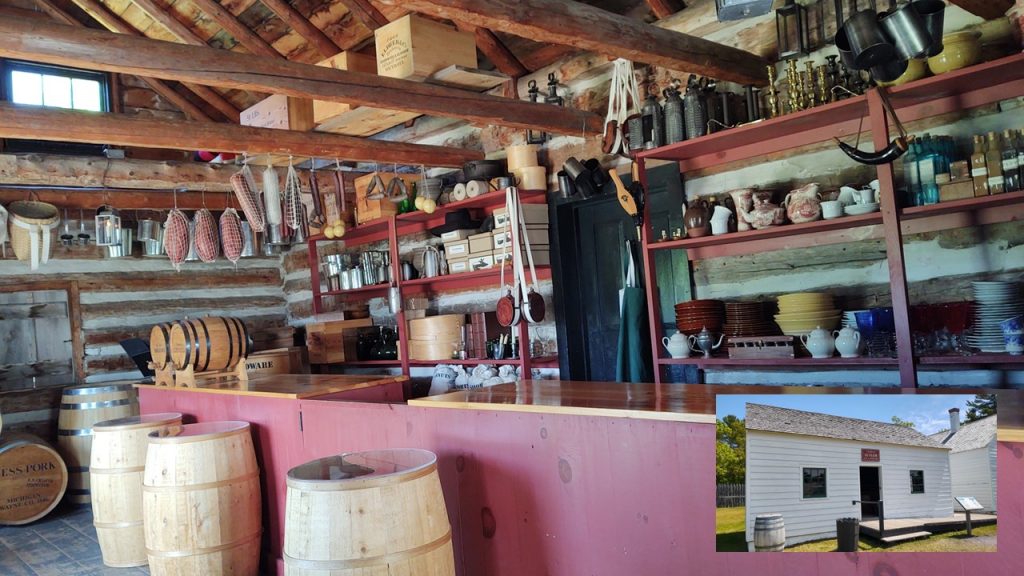
Visiting Fort Wilkins today is like transcending centuries. I encourage you to make the trek to the Keweenaw peninsula. Stay tuned for more articles featuring this region rich with history.
Chuck and Martha Hayden, aka The Viking and Poppins, enjoy going on adventures off the beaten path. They also like to share their explorations with others. The Viking is a retired expedition leader while Poppins is a retired teacher. The two offer independent views of their journeys showcasing places, people, and cultures as they explore the world. Visit and follow them on their website and social media accounts. Website | Facebook | Instagram |YouTube


Leave a Reply